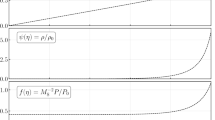Abstract.
The collapse of a single cavity, or a cloud of bubbles has several physical consequences when in proximity to a structure or resident within a material during deformation. The earliest recognized of these was cavitation erosion of the propellers of steam ships. However, other processes include the rapid collapse of cavities leading to hot spots in explosives from which reaction ensues, or the more recent phenomenon of light generation by oscillating single bubbles or clouds. In the collapse of a cavity, the least considered but the most important mechanism is asymmetric closure. One of the consequences of this is the formation of jets leading to local high pressures and shears that result in the damage or reaction mechanisms observed. The challenge for the future remains in understanding the effects of cloud cavitation since it is likely that only one bubble in perhaps millions in a cloud catalyses an event. The review follows the author's work in the understanding of shock-induced cavity collapse and highlights several results which indicate the importance of this problem in a variety of fields.
Similar content being viewed by others
Author information
Authors and Affiliations
Additional information
Received 27 July 2001/ Accepted 25 January 2002
Rights and permissions
About this article
Cite this article
Bourne, N. On the collapse of cavities. Shock Waves 11, 447–455 (2002). https://doi.org/10.1007/s001930200128
Issue Date:
DOI: https://doi.org/10.1007/s001930200128




